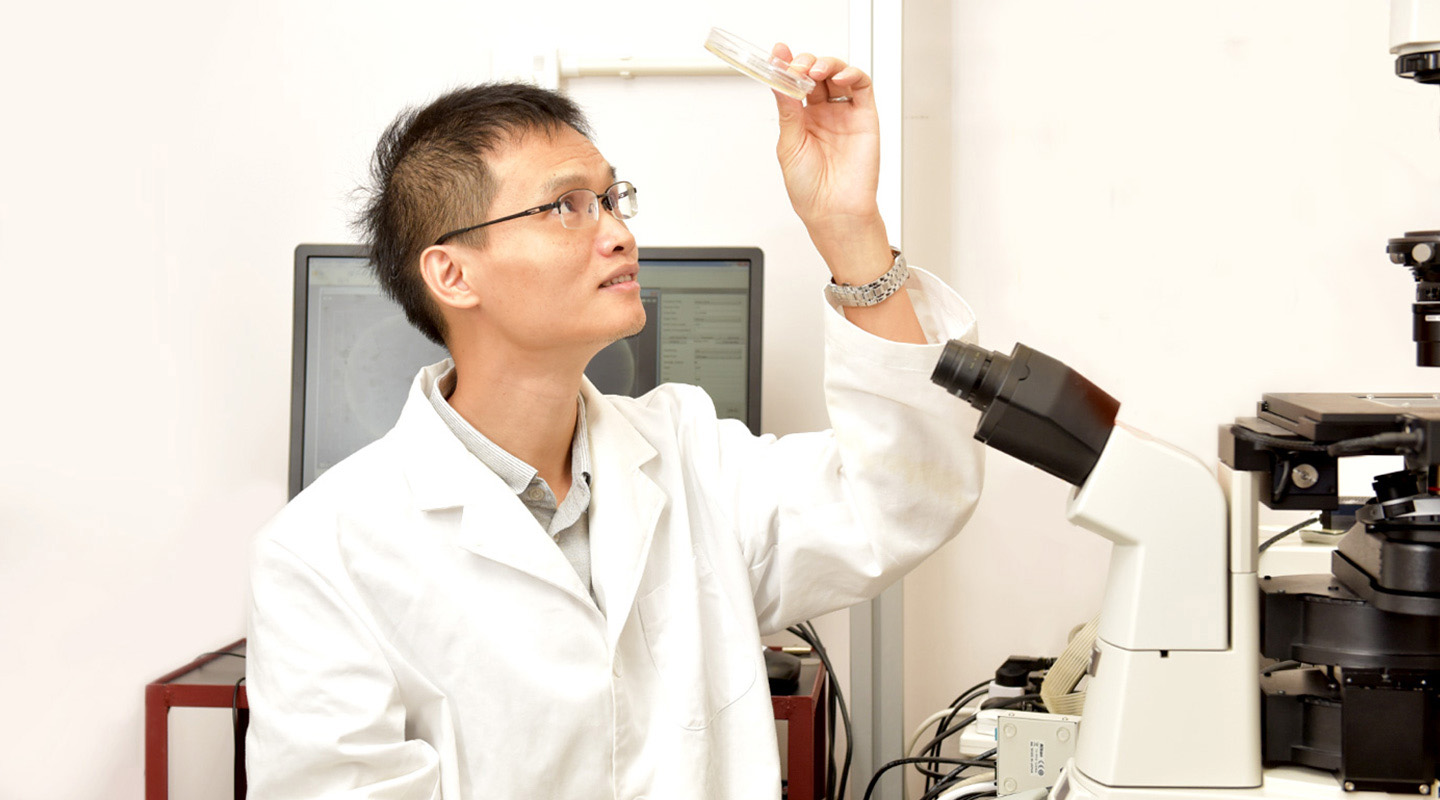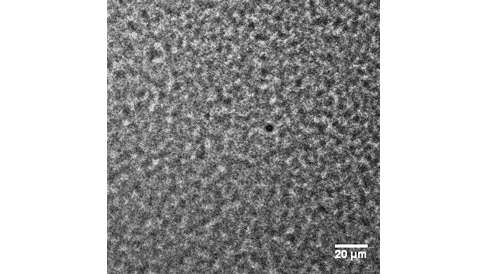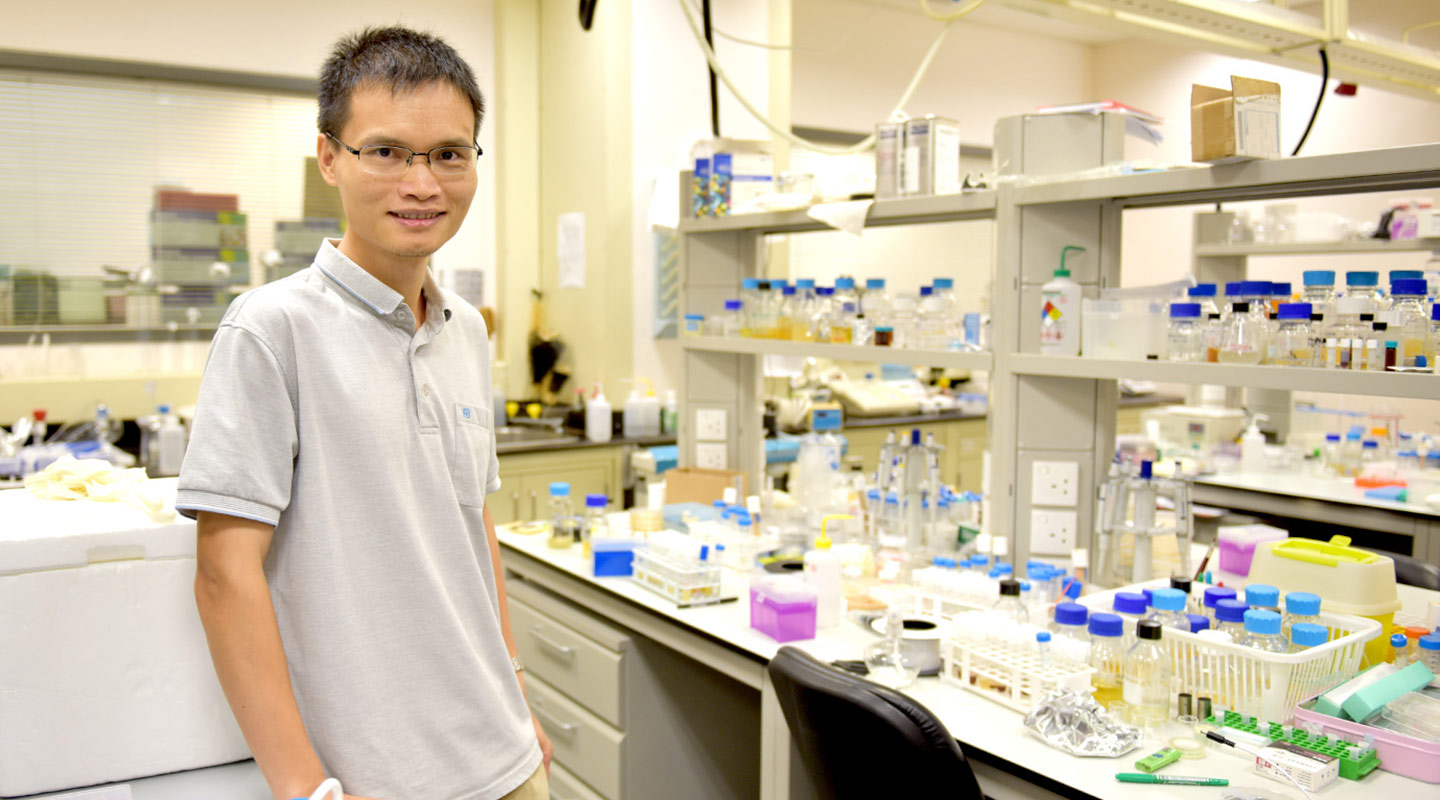Dear readers, With the launch of e-newsletter CUHK in Focus, CUHKUPDates has retired and this site will no longer be updated. To stay abreast of the University’s latest news, please go to https://focus.cuhk.edu.hk. Thank you.
Zigging and Zagging to Deeper Truths
Wu Yilin Uncovers the Secret Pattern of Cell Movement

Prof. Wu Yilin says watching bacteria in a Petri dish under a microscope is his kind of fun – as good as going to the movies.
A microbiologist and biophysicist, he has watched that film so many times that he knows how it ends. Or so he thought.
Bacteria normally appear to move around randomly. That’s what Professor Wu observed with his microscope focused tight on each individual cell. But he gradually developed a hunch that something else was going on.
It was when he shifted the microscopic movements out of focus that he started to see a pattern. Collectively, the bacteria did not appear to have totally random movements. They were moving in combined symphony, oscillating in predictable elliptical spheres, at much the same pace.
He immediately knew what he was witnessing was something new and unrecorded to science. ‘Wow! A door was suddenly opened up for us,’ Professor Wu, who holds a position in the Department of Physics, recalls.
Defocusing the images filtered out the noise of the individual movements of each cell, in effect taking a step back to get the bigger picture. The greater perspective revealed a previously hidden order of movement.

Professor Wu and one of his doctoral students, Chen Chong, then worked to visualize the hidden pattern using physical tracers and image-processing techniques. This gave the living proof that the bacteria do move in a loose pattern of collective oscillation, driven by their individual interactions with each other to form a similar group orbit.
The findings were published in Nature, two years ago. Of course, once he established the startling pattern, he also had to figure out why it had developed.
There are two main sources of the oscillation. First, bacteria bump into each other, which causes them to align and move in a similar direction. Then, every bacterium has a flagellum, a tail that operates like a propeller. Its rotation stirs the fluid surrounding bacteria, which exerts a force on neighbouring the bacteria, causing them to move in a certain direction or change speed.
There are other collective oscillations in processes such as the formation of an embryo or the development of human organs. But these stem from individual units that are already moving in a predictable pattern.
By contrast, this new collective oscillation is a totally new mechanism, requiring no inherent oscillation of individual units. Instead, it is an ‘emergent behaviour’ that stems from the weak interaction between a large number of cells that at an individual level are indeed moving in an erratic way.
It’s the weak interaction of such unpredictable cells that ensured this pattern went unnoticed for so many years. The oscillatory pattern that Professor Wu’s team have observed in a Petri dish should also apply to much larger populations of cells. Knowing that they share this pattern could prove another useful insight for biomedical research.
Professor Wu believes the newly described patterns of movement could have a ‘profound effect’ on the study of the formation and structure of bacterial biofilms. Many bacteria live in biofilms, surface-associated communities that play an important role in fields such as ecology and human health.
These biofilms, found in places like the lung airways, are often highly resistant to antibiotics when densely packed with bacteria. Knowing the flow of how they will oscillate may enable scientists to affect the development and structure of such biofilms.
For instance, cancer-tumor cells are at their most dangerous when a solid tumor metastasizes and breaks apart. This causes them to disperse and migrate elsewhere in the body, spreading the cancer. Knowing how they will move and behave should help researchers figure out how to treat that phase of the disease.

Changing the properties of a biofilm may change the time period of the oscillation. Professor Wu is now investigating those possibilities, as well as looking for other types of collective behaviour in bacterial colonies.
One potential target of scrutiny is pseudomonas, an opportunistic pathogen that is often acquired by patients with compromised immune systems. The pseudomonas cells communicate to each other, and can modify their physical environment to prolong their lifespan and enable their long-range dispersal.
This kind of complex communication between bacteria is another level above the basic identification of the collective oscillation. There’s still enough to be done at that level to occupy Professor Wu.
‘Even if you know how cells interact exactly at an individual level, it’s unpredictable what interaction they’ll have at a combined level,’ Professor Wu explains. ‘That’s the most amazing part of studying collective behaviour.’
By Alex Frew McMillan